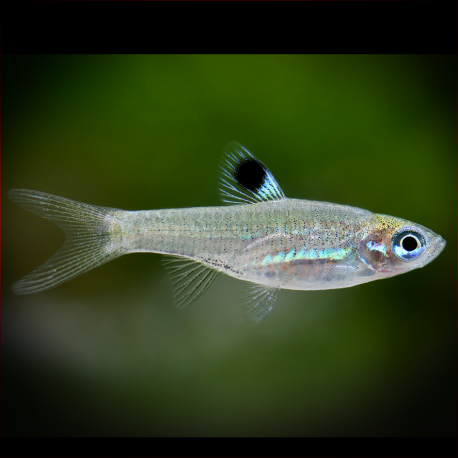More info
Datasheet
| Minimum Tank Size | 40 litres / 10.57 US gallons |
| Maximum Size | 3.5cm / 1.38inches |
| Temperature | 20°C / 68.00°F - 25°C / 77.00°F |
| Hardness | 1.01dgH / 18ppm - 10.03dgH / 179ppm |
| pH | 5.0-7.5 |
Behaviour
The Eyespot Rasbora is a peaceful species, making it an excellent addition to a well-chosen community tank. It coexists well with various fish including other small cyprinids, tetras, livebearers, dwarf cichlids, catfish, and loaches. These fish are best kept in a group of 8-10 individuals to maintain a natural-looking display and reduce nervousness. In a group, males will display their best colors while competing for female attention. They also make good companions for anabantoids like Sphaerichthys and Betta species.
Feeding and Diet
Stomach analyses of wild specimens have shown that the Eyespot Rasbora is a micropredator, feeding on small insects, worms, crustaceans, and zooplankton. In an aquarium, they accept dried foods but should be regularly offered small live and frozen foods like Daphnia and Artemia for optimal nutrition.
Reproduction & Dimorphism
The Eyespot Rasbora is an egg-scattering, continuous spawner without parental care. To increase fry yield, a controlled approach involving dimly lit breeding containers with suitable water conditions is recommended. Mature females are rounder-bellied and slightly larger than males.
Habitat and Distribution
Native to southern Thailand, Peninsular Malaysia, and the Sunda islands, the Eyespot Rasbora thrives in blackwater streams associated with peat swamps. These habitats are characterized by soft, acidic water and dim lighting due to forest cover, though they face threats from human activities. Wild-caught specimens are rare in the aquarium trade due to commercial breeding.
Aquarium Setup
The Eyespot Rasbora thrives best in a well-planted tank with dark substrate and soft, sandy substrate. Driftwood, branches, and leaf litter can be added to mimic a natural environment. Dim lighting is preferred, and the species can coexist with specific plant species that tolerate low light conditions.
For more details on water conditions, please refer to the table.

